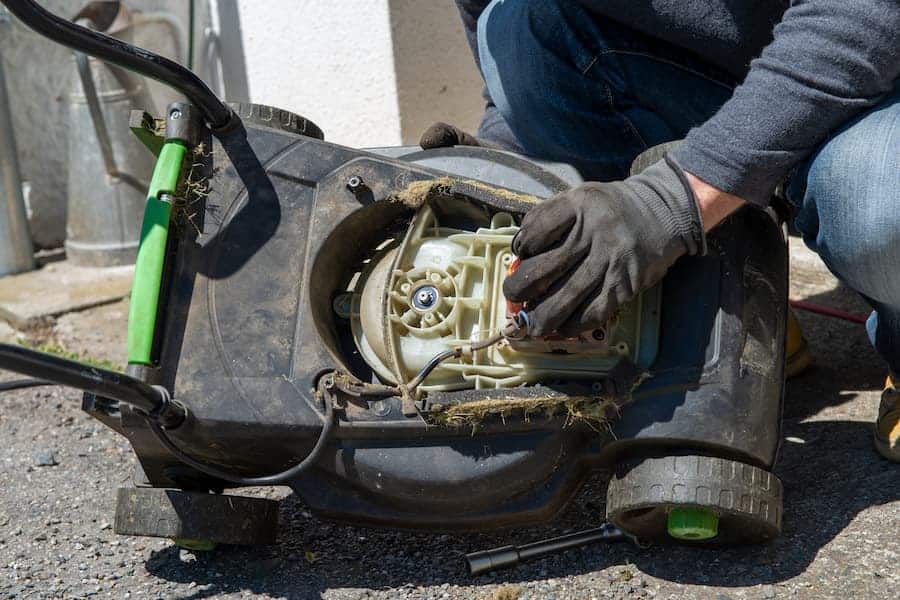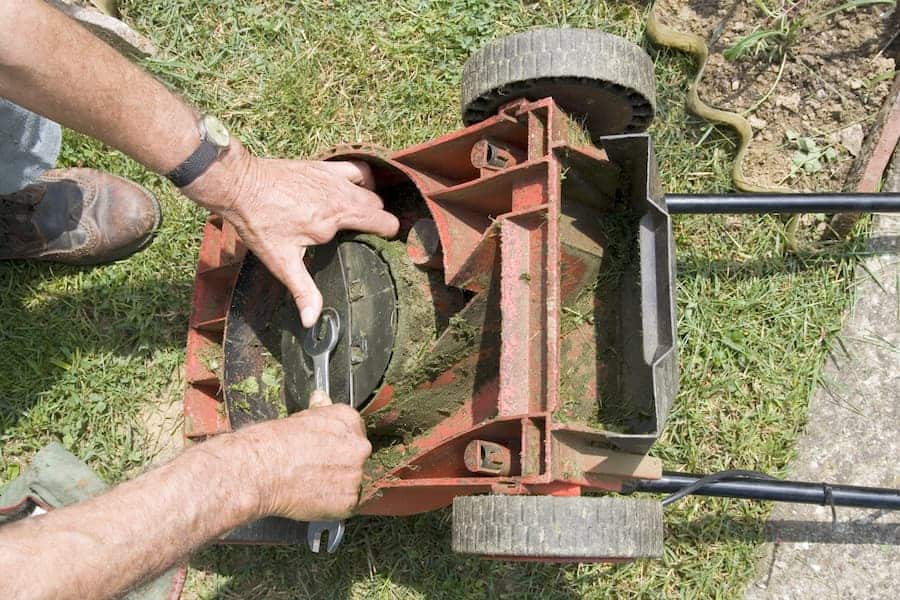As if mowing your lawn weren’t enough of a chore, now your Honda lawn mower won’t work? Limit your frustration with this guide. We’ll teach you the most common reasons a Honda lawn mower stops working and how to fix them.
Fixing a Self Propelled Honda Lawn Mower
Follow this protocol to fix a self-propelled Honda lawnmower and get back to mowing.
- Be safe. Whenever you’re working on your lawnmower, you should put on heavy leather gloves to protect yourself from the blades. Always work on a cool engine. Remove the spark plug or disconnect the wire to prevent accidental turn-on.
- Protect your lawnmower. If you need to tilt your lawnmower, make sure the side with the carburetor and air filter is always facing up. If you don’t, you may have an oil leak, causing hydro-lock that mimics a seized engine.
- Diagnose the problem. Below is a list of reasons a Honda riding mower might stop working. Check each item until you discover the problem and the necessary fix.
- Find an appropriate shop or retailer. There’s no shame in taking your lawnmower to a professional. If you have time to tinker and want to attempt the repair yourself, you’ll need to find a retailer where you can obtain the parts. Honda makes, tests, and sells lawnmower parts directly to consumers.
These are called ‘Original Equipment Manufacturer’ or OEM parts. These parts have been custom engineered to fit with a Honda machine, and using them tends to simplify the repair process.

- Take pictures before you remove anything. While most Honda lawn mower repairs are fairly straightforward, accessing the affected part can be a challenge. You may have to remove other components in order to perform a repair. Take a photo of anything you’re about to remove and refer back to it when you inevitably have a question about order or orientation.
Related: Why does my mower run for a little while and then die out?
Why Doesn’t My Self-Propelled Honda Lawn Mower Work?
Run through these common issues to find the reason for your lawnmower woes and how to fix them.
Broken V-Belt/Drive Belt
The driveshaft is connected to the transmission by a rubber belt that can wear out over time or snap suddenly if you try to cut grass that is too high. Without this belt, your mower can’t self-propel and you need to fix it.
The Fix: If the drive belt has slipped off one of the pulleys, reattach it. If the drive belt is missing or broken, purchase and install a new drive belt. In both cases, make sure the belt is affixed tight.
Damaged Drive Pulley
The drive pulley is mounted on the transmission. If it’s malfunctioning, the torque won’t reach the wheels and your Honda riding mower won’t move. Visually inspect the drive pulley, checking for damage.
The Fix: If the drive pulley is visibly damaged or not moving, you’ll need to replace it. To access the area and perform the repair, you will need to remove the blade, the debris shield, and the transmission belt.
Related: Learn how to sharpen your lawn mower blade without having to remove it!
Worn Out Wheel Assembly Gears
The power generated by the engine turns the driveshaft. The driveshaft is connected to the wheel assembly via a set of gears. The smaller gear, or pinion gear, is located on the wheel assembly.

If this gear has been damaged or stripped, your Honda lawn mower won’t run.
The Fix: Source an appropriate pinion gear and perform the replacement. The pinion gear is accessed by lifting the rear of the lawnmower. This position should not be maintained for more than a few minutes at a time, or oil may flood the combustion chamber.
You’ll need to remove the wheel, the snap ring, and the washer, before sliding the pinion gear off. Lubricate and insert the replacement, then reassemble the wheel as before.
Transmission Trouble
As discussed above, transmission conveys power from the engine to the driveshaft through a pulley. If the pulley turns, but the wheels do not, your transmission is bad and needs to be replaced.
The Fix: The transmission is not repairable. It will need to be replaced for your Honda lawnmower to start working again. You will need to purchase a new transmission.
To perform this repair, you will need to almost completely disassemble your lawnmower. Remove the rear wheels, wheel assembly, debris shroud, clutch cable, transmission spring, and engine belt guard before removing the old transmission and replacing it with the new one.
Conclusion
There are many reasons a Honda lawnmower might stop self-propelling. Read through a list of common issues and diagnose the issue. You can attempt most repairs yourself; follow safety protocols.